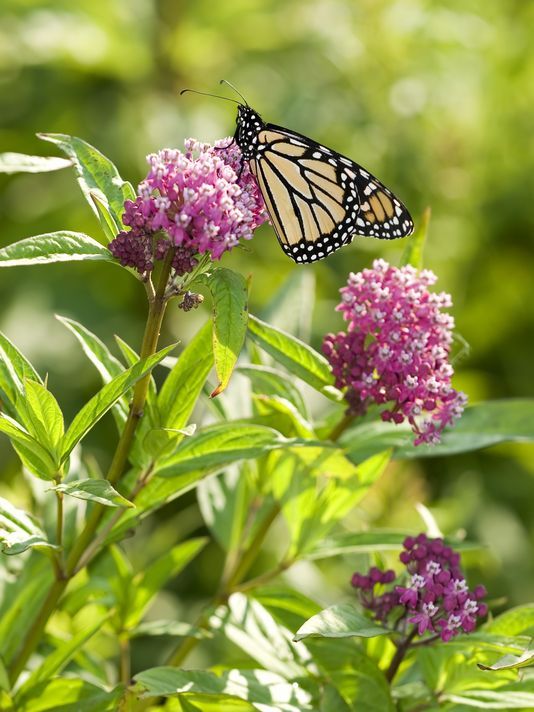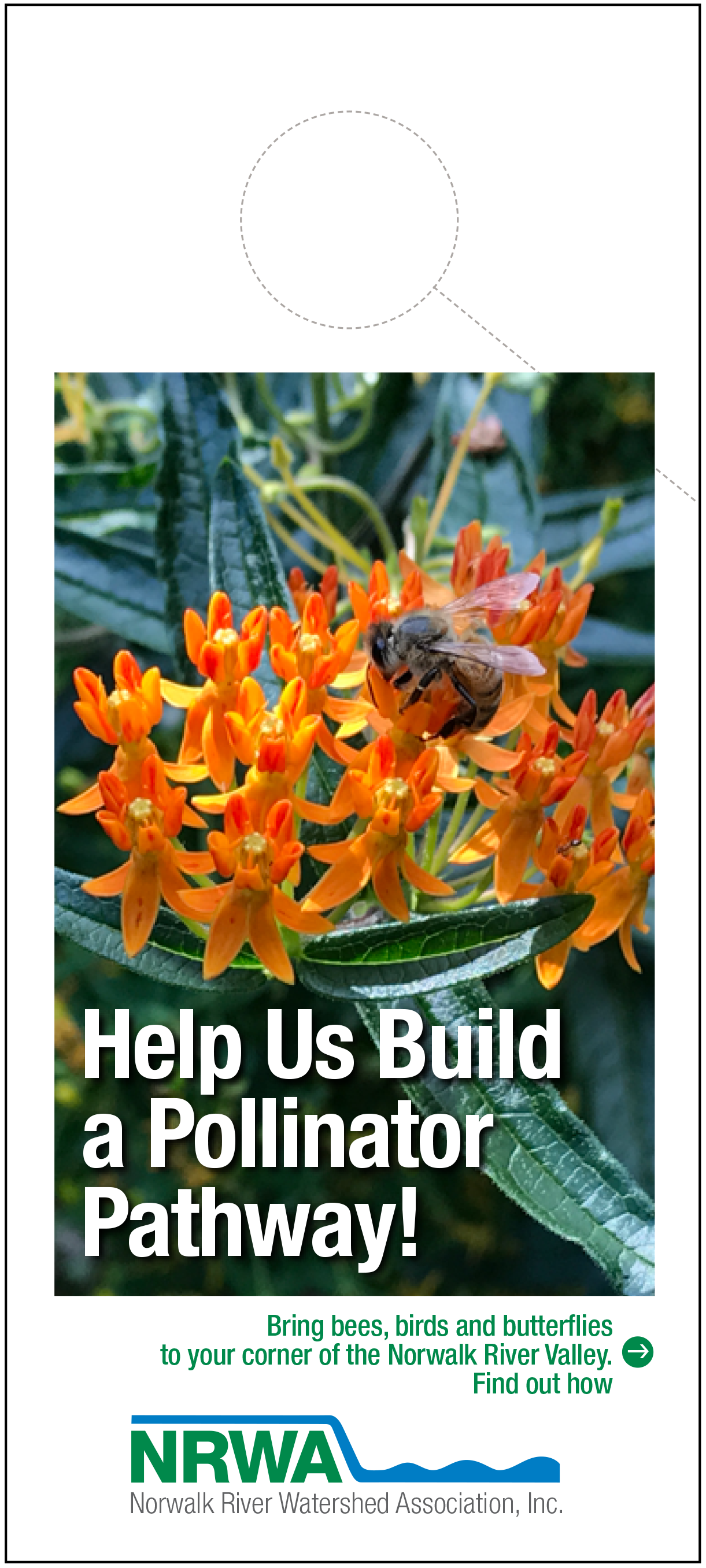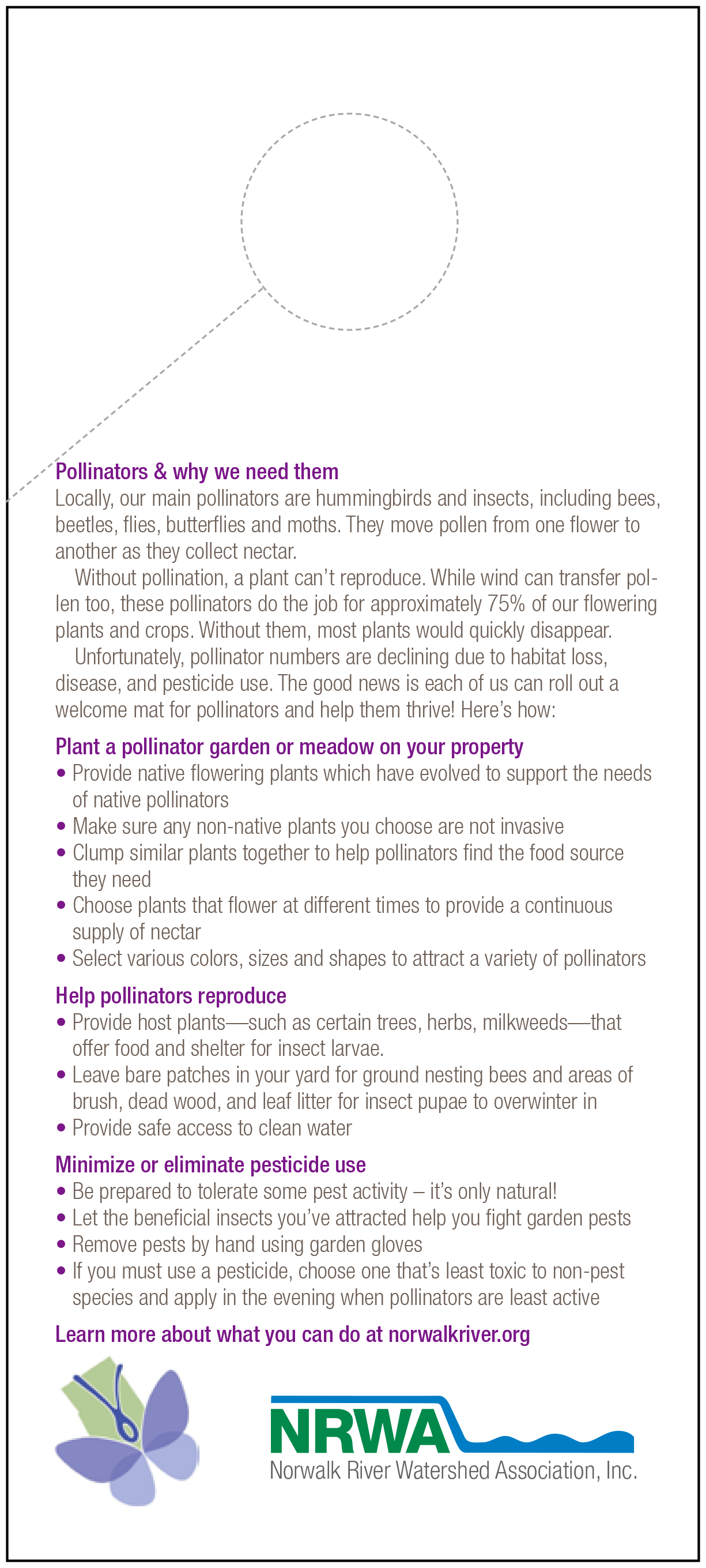Pollinator Pathway
Norwalk River Watershed Association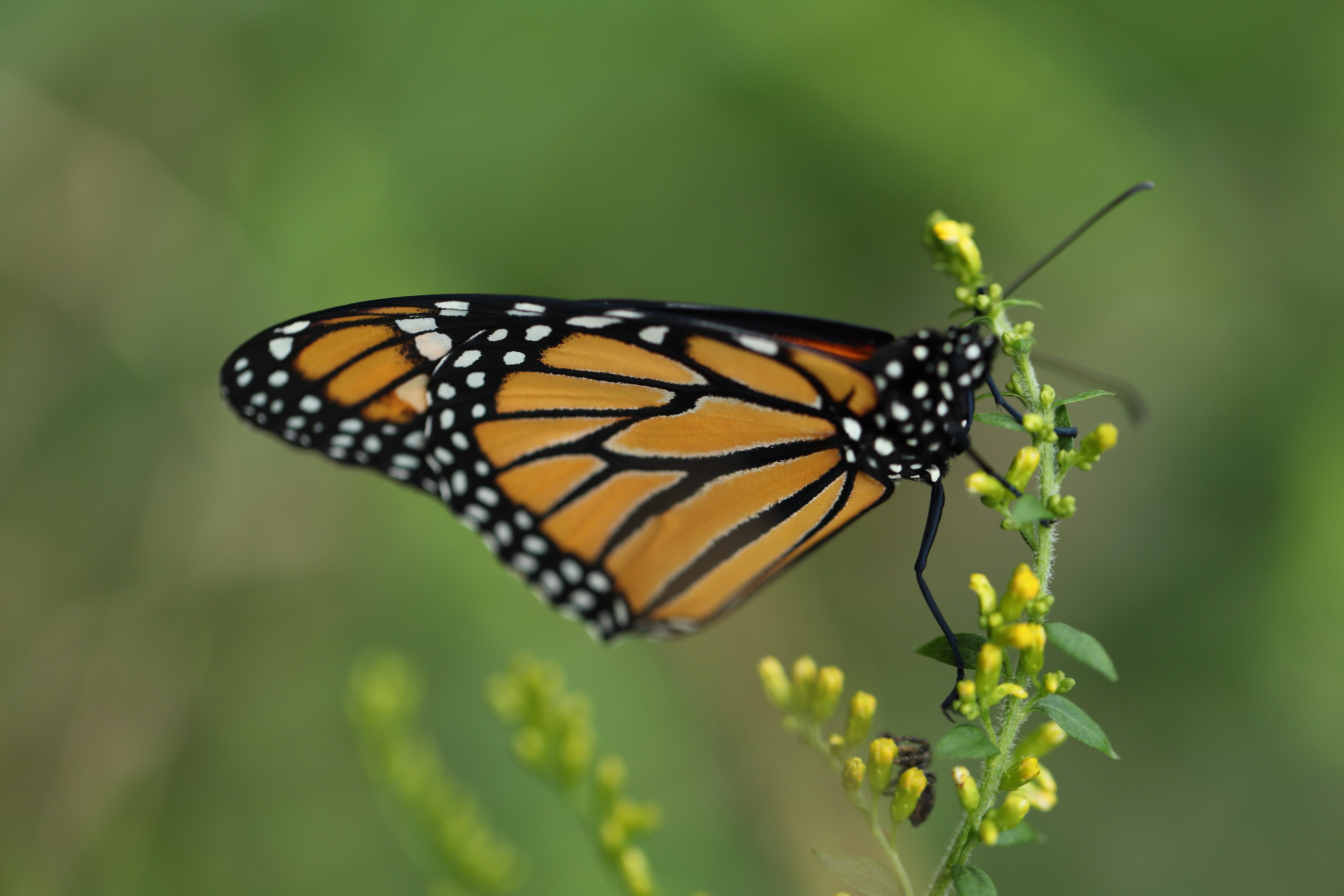
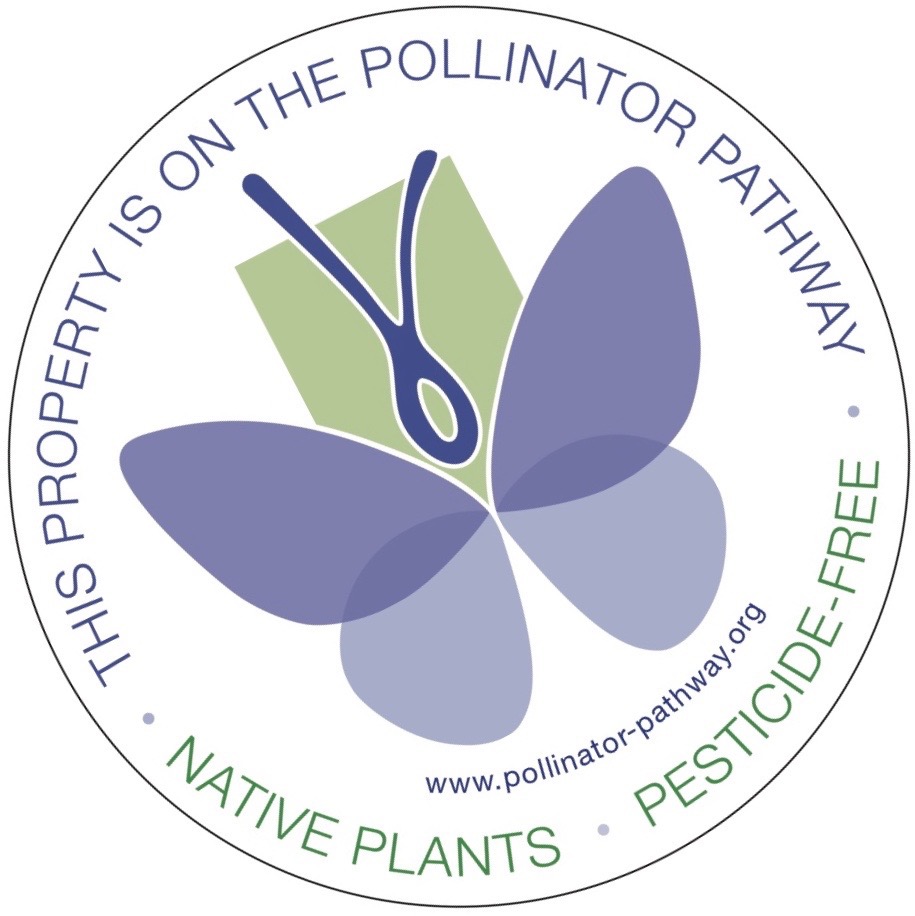

Wilton, Ridgefield, Norwalk, Redding, Weston, New Canaan, Lewisboro and now over 280 other towns across the region have launched Pollinator Pathways to bring back bees and butterflies
NRWA’s Work in helping start the Pollinator Pathway is
Watch and Share this Short Video and Join Us!
For more information, visit Pollinator-Pathway.org
How to join?
- Add native plants to your yard
- Skip the pesticides
- Rethink your lawn
Add your property to this map of private and public pesticide-free way-stations for bees, birds, butterflies and other insects long the Pollinator Pathway.
Order a 6″ or a 12″ metal yard sign, pictured left, to help us spread the word. The sign can be mounted on a tree, mailbox post, fence, or on a small stake. Order here.
It Started in Wilton
By Jackie Algon
Residents have the opportunity to use their own backyards to make an environmental impact by joining the Pollinator Pathway. Spearheaded by volunteers from several conservation organizations including NRWA, the program aims to establish pollinator-friendly habitat and food sources for bees, butterflies, hummingbirds and other pollinating insects and wildlife along continuous corridors through the 7 watershed towns and beyond.
The initiative lifted off in 2017 with a presentation at the Wilton Library about what pollinators are, why they are important and how we can create a positive environment for them. On-going plantings and talks continue in the region. Come learn which plants to use, where to get them, and how to plant them. Check the events page for listings. Join the Pathway by pledging to include native plants, creating a pollinator-friendly space on your property–as small as a container to as large as a meadow–and to avoid pesticides and chemical fertilizers.
While a connected corridor has been earmarked as Pollinator Pathway, all residents are encouraged to participate. The initiative is modeled after one started in Norway by a woman who created a “bee highway” through Oslo.
This effort was originally coordinated by NRWA, Woodcock Nature Center, Wilton Land Conservation Trust, Wilton Garden Club, Hudson to Housatonic Partnership, Ridgefield Garden Club, Caudatowa Garden Club, Ridgefield Conservation Commission, Ridgefield Library, RACE, NRVT, Norwalk Tree Advisory Committee, Rowayton Gardeners, Norwalk Land Trust, Norwalk Garden Club, Grace Farms, Redding Land Trust, Redding Garden Club, Weston Garden Club, Sustainable Weston, Highstead, Westchester Land Trust, and growing!
Wilton artist, Paige Lyons, designed the logo, which shows the town map in green and the configuration of the “Y” shaped pathway in purple.
Follow the Pathway on Facebook @NortheastPollinatorPathway @WiltonPollinatorPathway & @RidgefieldPollinatorPathway & @NorwalkPollinatorPathway
Email us at info@norwalkriver.org to have a Garden Club member from your town come to your yard to help you design a pollinator garden that works as part of your landscape.
Plant Lists For Starting Your Pollinator Garden or Meadow
Pollinator Plants for the Northeast NRCS
Northeast Pollinator Plants Xerces Society
Planting for Monarchs Xerces Society
Planting for Native Bees in the Northeast (Xerces Society)
Audubon Native Plants Database
Sample List From State Native Plant Task Force
A few tips
Plant for a succession of bloom from early spring to late summer and fall.
Choose a variety of colors and shapes to suit different pollinators tastes.
Plant in clumps, so pollinators can spot your flowers from the sky.
